In the dynamic landscape of orthodontics, Invisalign has revolutionized the way we perceive teeth straightening. While these clear aligners are a marvel, the unsung hero ensuring the longevity of their results is often the retainer.
A post-treatment regimen isn’t just an afterthought; it’s the cornerstone of sustained oral excellence.
What is Invisalign?
Often referred to as ‘clear braces’, Invisalign provides a series of custom-made aligners, each crafted to make incremental adjustments to the alignment of teeth.
Beyond its obvious aesthetic advantages, Invisalign facilitates ease of use, reduced discomfort, and effective treatment without the stringent restrictions posed by traditional braces.
Types of Retainers Suitable After Invisalign
After Invisalign treatment, it’s essential to wear a retainer to prevent the teeth from shifting back to their original positions. There are several types of retainers suitable after Invisalign treatment:
1. Vivera Retainers
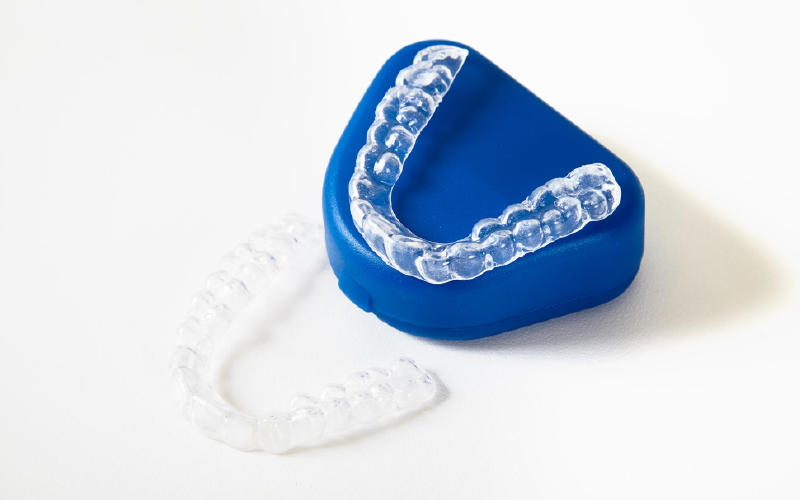
Made by the makers of Invisalign, these retainers are custom-made for patients using the same state-of-the-art technology as Invisalign aligners. They are clear and virtually invisible, much like Invisalign trays.
2. Hawley Retainers
This is one of the most traditional types of retainers. It consists of a metal wire that goes across the front of the teeth, attached to an acrylic mold shaped to fit the patient’s palate.
They are durable and can be adjusted if minor tooth movements are necessary. In contrast to clear plastic retainers, they are more obvious.
3. Fixed or Bonded Retainers
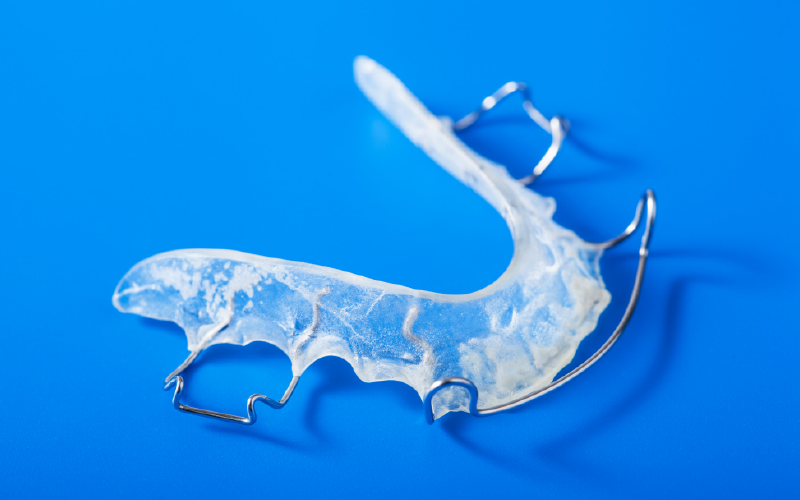
These retainers are made of a thin wire that is bonded or glued directly to the backside of the front teeth, making them invisible when smiling.
They can stay in place for years, and they are especially useful for patients who might forget to wear removable retainers.
The main disadvantage is that they can make flossing a bit more challenging, but with the use of floss threaders or a water flosser, it’s manageable.
4. Night Only Aligners
Some patients might be advised to wear their last set of Invisalign trays or a similar tray only at night. This approach may be suitable for those who have minor corrections and have been consistent in wearing their Invisalign aligners during treatment.
How Does Invisalign Differ From Traditional Braces?
Invisalign and traditional braces both serve to straighten teeth, but they differ significantly. Traditional braces use metal or ceramic brackets and wires, whereas Invisalign uses clear, removable aligners.
Invisalign offers the benefit of being nearly invisible and easy to clean, but traditional braces can be more effective for complex dental issues.
Regardless of the method, using retainers after braces, including the Invisalign brace, is essential to maintain the teeth’s position and prevent shifting.
Read Also: How to Straighten Teeth Without Traditional Braces
Benefits of Using Retainers Post-Invisalign
-
Maintaining Tooth Position
The most obvious and crucial benefit of using retainers post-Invisalign is to keep teeth in their new, corrected positions. After orthodontic movement, teeth have a natural tendency to shift back or “relapse” towards their original locations.
-
Stabilization of Bone and Periodontal Tissue
After teeth are moved, the bone and gums around them need time to adjust and stabilize in response to the new tooth positions. Retainers support this stabilization process, ensuring that the bone and tissue changes are retained over time.
Even without orthodontic treatment, teeth can naturally shift with age. Using a retainer regularly can help combat these natural tendencies, preserving the straight smile achieved with Invisalign.
-
Aesthetic Preservation
One of the main reasons people opt for Invisalign is for aesthetic improvement. Retainers ensure that the beautiful, straight smile achieved with Invisalign remains intact over the years.
-
Enhances Oral Hygiene
Better oral hygiene results from having straight teeth because they are simpler to clean. By wearing retainers and preventing teeth from shifting back, patients can maintain the ease of cleaning straight teeth, leading to a lower risk of decay and gum disease.
Read Also: Invisible Aligners vs. Retainers: What’s Best for Your Teeth?
Daily Maintenance Tips
-
Daily Cleaning
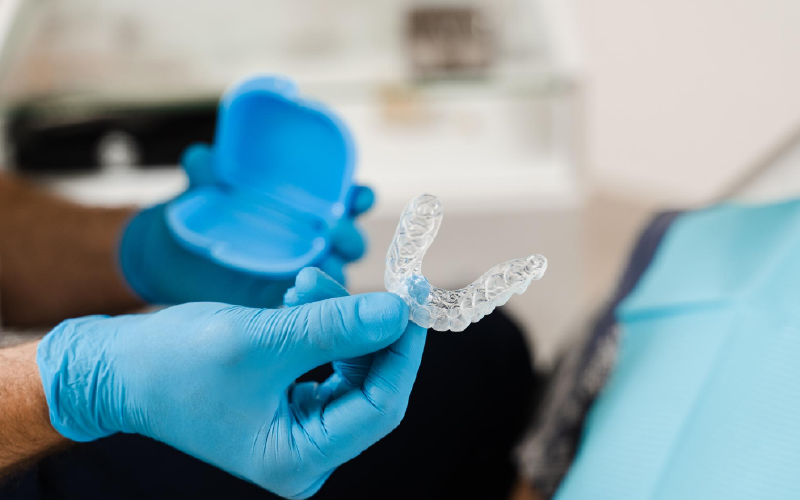
When you brush your teeth, make sure to clean your retainer Use a soft toothbrush, and gently brush the retainer with lukewarm water. Avoid using toothpaste, especially abrasive types, as they can scratch the retainer.
-
Soak in a Cleaning Solution
There are retainer cleaning solutions available, like Retainer Brite or Efferdent. These can help remove plaque and bacteria. However, always read the label and avoid products that contain chlorine, as it can weaken the retainer.
-
Avoid Hot Water
Never use hot water to clean your retainer, as it can warp and distort its shape.
-
Regular Rinsing
Rinse the retainer every time you remove it from your mouth to wash away plaque and debris.
-
Avoid Harsh Chemicals:
Don’t use alcohol-containing solutions, bleach, or other harsh chemicals on your retainer.
-
Store Properly
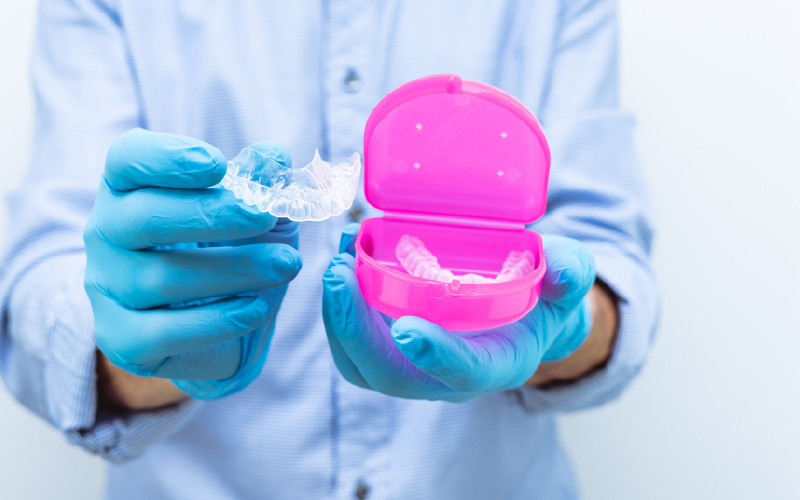
Keep your retainer in its case while not being worn. This will protect it from dirt, and damage, and prevent loss.
Read Also: How to Take Care of Your Dental Retainer: Tips and Tricks
Dealing with Common Retainer Problems
-
Buildup of Calcium and Tartar
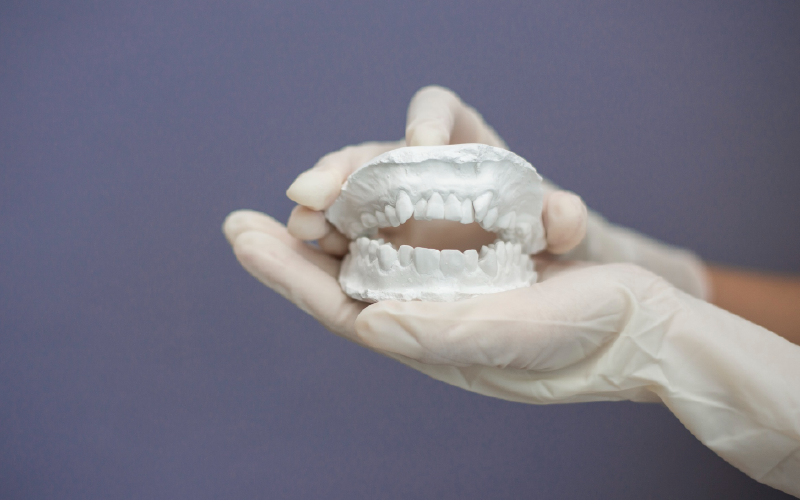
If you notice white build-up on your retainer, it might be calcium or tartar. To remove it, you can soak the retainer in a 1:1 solution of white vinegar and lukewarm water for 20-30 minutes, then use a soft toothbrush to scrub away the deposits.
-
Bad Odor
A stinky retainer can be due to bacteria buildup. Ensure you’re cleaning it daily and soaking it in a cleaning solution as mentioned above. If the problem persists, consult your orthodontist.
-
Warping
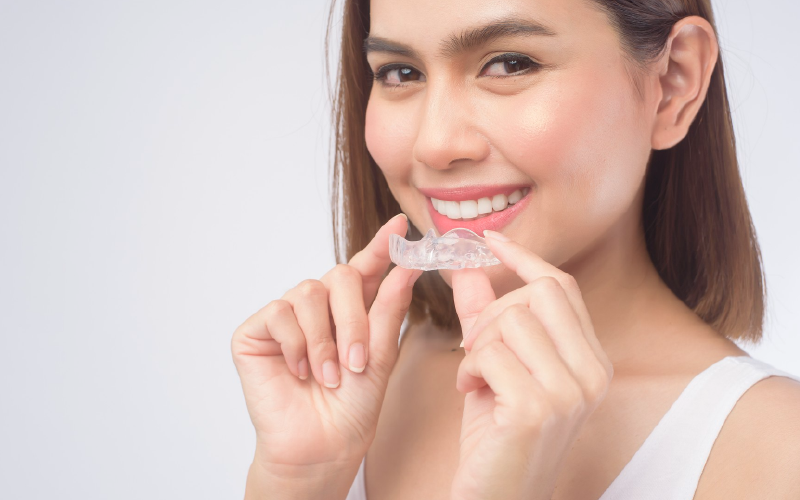
If your retainer feels different or doesn’t fit as snugly as it used to, it may have warped. This can happen if it’s exposed to heat (like being left in a car) or if it’s cleaned with hot water. If it seems warped, visit your orthodontist. A replacement or adjustment may be necessary.
-
Breaks or Cracks
Retainers can break or crack over time. If this happens, stop wearing it and see your orthodontist immediately. Continuing to wear a damaged retainer can hurt your mouth or cause your teeth to shift.
Why Retainers After Invisalign?
After Invisalign or any orthodontic treatment, wearing retainers is vital to maintain the newly aligned position of the teeth. The teeth have a natural tendency to revert to their original positions due to the elastic properties of the periodontal ligaments.
Additionally, the bone and surrounding tissues need time to stabilize and adapt to the new tooth alignment. Without retainers, the risk of teeth shifting back increases, undoing the hard work and investment put into achieving that perfect smile.
Related Post: Is a Retainer Necessary Post-Orthodontic Treatment?
Duration: How Long Should You Wear Retainers?
Certainly! The duration for which one should wear retainers is a topic of keen interest for many orthodontic patients. While individual recommendations will depend on the specific case and the orthodontist’s guidance, here’s a general overview of the typical wear times for various types of retainers:
-
Vivera Retainers
- Immediately After Treatment: 20-22 hours a day for 3-6 months.
- After Initial Period: Nighttime only.
- Long-Term: Nightly or a few nights a week.
2. Hawley Retainers
- Immediately After Treatment: 20-22 hours a day for 3-6 months.
- After Initial Period: Nighttime only.
- Long-Term: Nightly or a few nights a week.
3. Fixed or Bonded Retainers
- Continuously 24/7 as they are bonded to teeth. Regular dental check-ups are necessary to ensure they remain intact.
4. Night Only Aligners
- Nighttime only, generally 8-10 hours, starting immediately after treatment.
Replacing Your Retainers: When & Why?
Retainers, though durable, eventually wear out, crack, or get lost. It’s essential to replace them when they show signs of wear or become damaged to ensure they continue to effectively maintain tooth alignment.
Regularly inspect your retainer for thinning or distortion. If lost or damaged, seek a replacement promptly to prevent any potential shifting of the teeth.
Final Thoughts
Investing in Invisalign treatment is a significant step towards achieving the picture-perfect smile you’ve always desired. However, it’s equally crucial to understand that the journey doesn’t end once the aligners are off.
To ensure that your newly straightened teeth remain in their pristine position, retainers play an indispensable role. Just as the best Affordable dental services in CO would advise, regular use and proper care of retainers become essential in safeguarding that brilliant smile.
Whether you’re visiting the “Kids & Adult dental clinic” or seeking advice from renowned orthodontists, the unanimous consensus is clear: Retainers, such as the best teeth retainers available, are the unsung heroes of post-Invisalign care.
By prioritizing their use and maintenance, you not only preserve your smile but also make the most of your investment in dental health and aesthetics.

